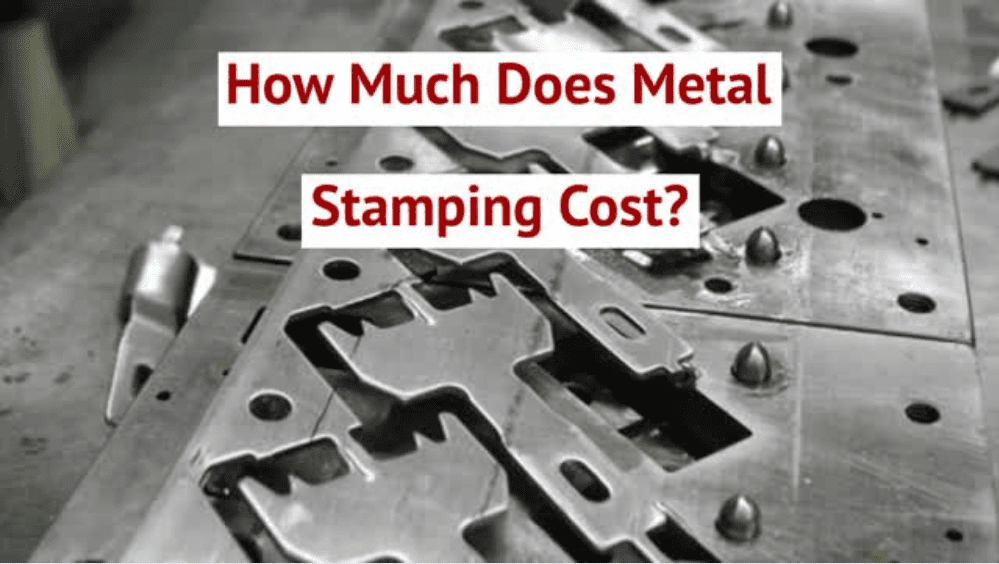Enhancing Productivity and High Quality Via Modern Metal Stamping Approaches
As the needs for accuracy and performance proceed to intensify, the combination of automation and digital tools into the steel marking process has become paramount. By exploring the detailed interaction in between innovation, automation, and precision in metal marking, a path towards unparalleled performance and top quality guarantee unfolds.
Advantages of Modern Steel Stamping
Modern metal marking deals various advantages in regards to effectiveness, precision, and cost-effectiveness in the production market. One of the vital benefits of modern steel stamping is its ability to efficiently generate high volumes of complex steel get rid of consistent top quality. This process eliminates the demand for multiple procedures as it can do various jobs such as blanking, piercing, creating, and reeling in a single procedure.
Furthermore, modern-day metal marking allows manufacturers to attain tight resistances and accurate requirements, guaranteeing that each component satisfies the called for requirements. This high degree of precision causes minimal product waste, reduced rework, and general better product top quality.
Additionally, modern-day metal stamping is a cost-effective manufacturing approach. The automation and high-speed capabilities of contemporary marking equipment cause reduced labor costs and faster manufacturing prices. This efficiency not only lowers manufacturing costs yet also allows business to fulfill tight production due dates and supply products to the market faster. Essentially, modern metal marking deals an affordable edge to producers seeking to boost performance and quality in their operations.
Advanced Technologies in Metal Stamping

One more key modern technology changing metal stamping is the usage of servo presses. Unlike conventional mechanical presses, servo presses offer better control over the speed and force used during the marking process. This control not just improves the quality of the stamped components but additionally minimizes material waste and power consumption.
In addition, improvements in simulation software have actually enabled suppliers to essentially evaluate and maximize the stamping procedure before physical manufacturing begins. This online prototyping helps determine potential problems early on, causing set you back savings and faster time-to-market for brand-new products. Generally, these advanced innovations in steel stamping are driving unmatched degrees of productivity and top quality in the industry.
Improving Effectiveness Via Automation
The integration of automated systems has dramatically enhanced the effectiveness of steel stamping processes. Automation in steel stamping operations uses a here myriad of advantages, including boosted manufacturing prices, improved accuracy, and minimized labor prices. By utilizing robotic arms and computer-controlled equipment, jobs that were formerly time-consuming and prone to errors can currently be implemented swiftly and with amazing precision.
Automated systems have the ability to take care of recurring tasks with consistency, resulting in higher efficiency degrees my response and minimized cycle times. This raised performance not only leads to cost savings but likewise guarantees a much more streamlined and trustworthy manufacturing procedure. Furthermore, automation permits for real-time surveillance and information collection, making it possible for suppliers to recognize and resolve concerns without delay, more maximizing the general effectiveness of metal stamping operations.
Moreover, automation advertises a more secure working setting by minimizing the requirement for hands-on intervention in hazardous jobs. By passing on these duties to automated systems, employees can concentrate on more complex and value-added tasks, adding to a much more efficient and productive operations in the steel stamping industry.

Top Quality Control Procedures in Stamping
Implementing rigid quality control procedures is extremely important in guaranteeing the accuracy and uniformity of metal marking procedures. One of the primary high quality control actions in metal stamping is performing normal evaluations throughout the manufacturing cycle.
In addition, implementing sophisticated modern technologies such as automated vision systems can further improve the high quality control procedure by making it possible for real-time monitoring and detection of any type of abnormalities throughout production. These systems utilize video cameras and computer system formulas to evaluate get rid of high precision and accuracy, reducing the danger of issues running away into the final product.
Furthermore, establishing a comprehensive documents system that videotapes quality assurance information and assessment results is vital for tracking performance trends and facilitating continuous renovation campaigns. By examining this data, manufacturers can identify possible locations for optimization and execute corrective activities to boost the general quality of their stamped items.
Enhancing Accuracy With Digital Equipment
Employing electronic tools can significantly boost the precision of steel marking processes, changing the method producers attain precision in their production. Digital devices such as computer-aided design (CAD) software program enable for the creation of detailed stamping layouts with exceptionally accurate dimensions. By inputting in-depth specifications right into the software, suppliers can guarantee that each stamped item meets specific dimensional requirements, lowering errors and hop over to here waste in the manufacturing process.
In addition, the integration of sensing units and real-time monitoring systems in marking tools allows suppliers to carefully check the stamping procedure and make prompt adjustments to make certain precise results. These electronic tools give useful data on variables such as stress, speed, and alignment, permitting quick identification and modification of any variances from the wanted specifications.
Conclusion
In final thought, modern-day metal stamping techniques use numerous benefits for improving efficiency and top quality in manufacturing processes. By utilizing sophisticated modern technologies, automation, quality assurance measures, and digital tools, business can enhance effectiveness, accuracy, and total efficiency. These technologies in metal stamping not only streamline production processes but also make sure constant and high-grade outcomes. Welcoming these modern-day strategies can bring about substantial innovations in the production sector.
Comments on “Comprehensive Overview to Metal Stamping: Strategies, Applications, and Advantages”